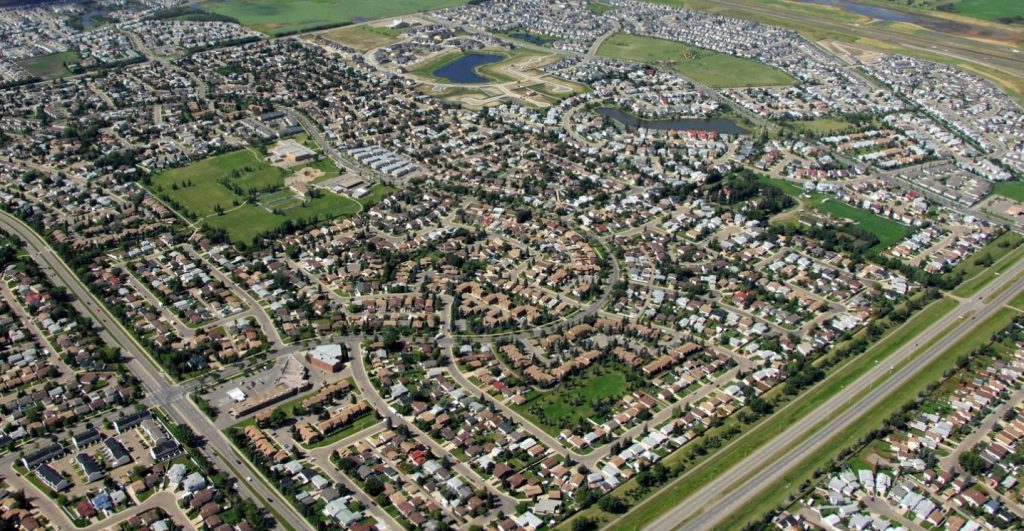Municipal Annexations in Alberta: Good, Bad or Inevitable?

Annexation is the most common form of municipal government reform and boundary restructuring, in Alberta and elsewhere in Canada. The process essentially lets a municipality permanently acquire and incorporate territory of an adjacent or non-contiguous municipality. Furthermore, it is not subject to any ex post facto review.
Given its prevalence, annexation significantly affects both urban and rural agricultural communities. This study will examine annexation in Alberta to address the following few questions:
- How effective is annexation in expanding municipal boundaries?
- What are the implications of this strategy? Specifically, has it provided planning and land use control measures in city-regions, strengthened the tax base, and contributed to making urban-regional economies healthier?
- How does Alberta’s use and outcomes of annexation compare to other jurisdictions in Canada?
The study will use select case studies from the scores of annexations approved since 1995. Because of the complexity and geographic scope, the study will be conducted in stages focusing on various regions of the province. Several data sources from the Municipal Government Board (MGB), which approves annexations, and municipalities that participated in the annexations will provide a good picture of this process.
Further, important qualitative, contextual information will be generated through interviews with the officials of the municipalities involved in the annexation process, and past and current members of the MGB. The analysis will also rely on census information and the spatial data from the ABMI human footprint dataset.
Urban, Suburban, Regional and Wet Growth in Alberta
Sub(urban) growth, or “sprawl” as it is often described, elicits various emotions among elected officials, policy-makers, planners, land developers, and residents. The phenomenon is either well supported or categorically rejected, although for some people a comfortable middle ground emerges. Despite the fast pace of growth in Alberta, however, misconceptions, questions, and assumptions remain regarding the impact of sprawl on the urban form.
This report will help inform policy decisions at the local and provincial levels in Alberta. We also hope the findings will contribute more broadly to the current national, province-wide, and local debate on urban form.
Download Urban Suburban Smart and Wet Growth in Alberta
Publications
Agrawal, S. 2018. A view from Alberta: Municipal boundary adjustment. Plan Canada. Vol. 58 No. 3. Pp. 06-09 Download
Preston, V., Murdie, R., Wedlock, J., Agrawal, S. and Anucha, U. Fall 2010. Seeking Affordable Homeownership in the Suburbs: A Case Study of Immigrants in York Region. Canadian Issues. pp 40-43
Agrawal, Sandeep and Ladouceur, Emma. 2007. Design Review: Lessons for Toronto. Plan Canada. Vol. 47 No. 1.Pp 32-35.
Kumar, Sandeep. 2005. Decision-Making in Urban Design: The Ontario Municipal Board Decisions in Toronto, Canadian Journal of Urban Research Vol. 14. No. 2.Pp 209-237.
Kumar, Sandeep and George, Varkki. 2004. Analyzing Planning and Design Discourses. Environment and Planning B: Planning and Design. Vol. 31, No. 6.Pp 829-846.
Kumar, Sandeep. 2003. Information in Design Review. Planning, Practice and Research.Vol.18 No.4.pp 243-263.
Kumar, Sandeep. 2002. Canadian Urban Design Practice: A Review of Urban Design Regulations. Canadian Journal of Urban Research. Winter. Vol. 11, No.2.pp 239-263.
Kumar, Sandeep and George, Varkki. 2002. Fallacious Argumentation in Design Review. Urban Design International Vol. 7 No. 2.Pp 83-95.
Kumar, Sandeep and Sandeepa Goel. 1994. Fuzzy Sets in Urban Design. International Journal of Systems Science, Vol. 25, No. 11.Pp 1727-1741.